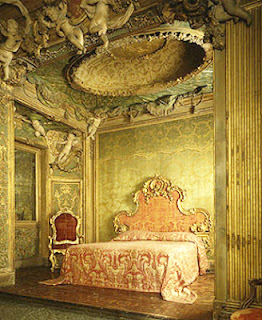Insomnia can make your life miserable. A living hell. You try to catch a quick nap with maybe a beer or wine to help, but that doesn't work. Your doctors don't take the problem seriously. Ambien, diazepam, Ativan, valium--you try it all. Your brain is in 5th gear but your body is exhausted. Unfortunately, your tolerance for drugs increases and you need more pills. At the start, you only used two and now it is up to six, with a shot of whiskey on the side. If you are lucky that should give you 3-5 hours of sleep.
I too have had insomnia for years. I guess Michael Jackson, Anna Nicole, Marilyn Monroe and Heath Ledger suffered through sleeplessness too. I wish insomnia were treated as a 'disease'. I know my insomnia is caused by my multiple sclerosis which affects the brain---sometimes my ankles move involuntarily for hours. All that can sure keep me wide awake. I have medications to help me sleep and I could not sleep without them. Insomnia can kill us! Too many pills, too much alcohol, driving a car while exhausted, a bad fall, a swim in a pool after taking sleeping pills. A friend of my mother's drowned in her bathtub after taking her pills and a glass of wine.
Heath describes over and over how he could not sleep. I wish people had listened to Heath and realized that his insomnia was killing him. Insomnia is serious. It is not a joke. One day it will be treated as a real symptom and we will lose fewer Heaths to sleep medication overdoses!
In a New York Times interview, published on 4 November 2007, Ledger told Sarah Lyall that his recently completed roles in I'm Not There (2007) and The Dark Knight (2008) had taken a toll on his ability to sleep: "Last week I probably slept an average of two hours a night. ... I couldn't stop thinking. My body was exhausted, and my mind was still going." At that time, he told Lyall that he had taken two Ambien pills, after taking just one had not sufficed, and those left him in "a stupor, only to wake up an hour later, his mind still racing."
Prior to his return to New York from his last film assignment, in London, in January 2008, while he was apparently suffering from some kind of respiratory illness, he reportedly complained to his co-star Christopher Plummer that he was continuing to have difficulty sleeping and taking pills to help with that problem: "Confirming earlier reports that Ledger hadn't been feeling well on set, Plummer says, 'we all caught colds because we were shooting outside on horrible, damp nights. But Heath's went on and I don't think he dealt with it immediately with the antibiotics... I think what he did have was walking pneumonia.' On top of that, 'He was saying all the time, 'dammit, I can't sleep'... and he was taking all these pills to help him.' "
In talking with Interview magazine after his death Ledger's former fiancée Michelle Williams also confirmed reports the actor had experienced trouble sleeping. "For as long as I'd known him, he had bouts with insomnia. He had too much energy. His mind was turning, turning turning – always turning."
Turning, turning no more. RIP Heath. Now you can sleep.
.jpg)
.jpg)













.jpg)











